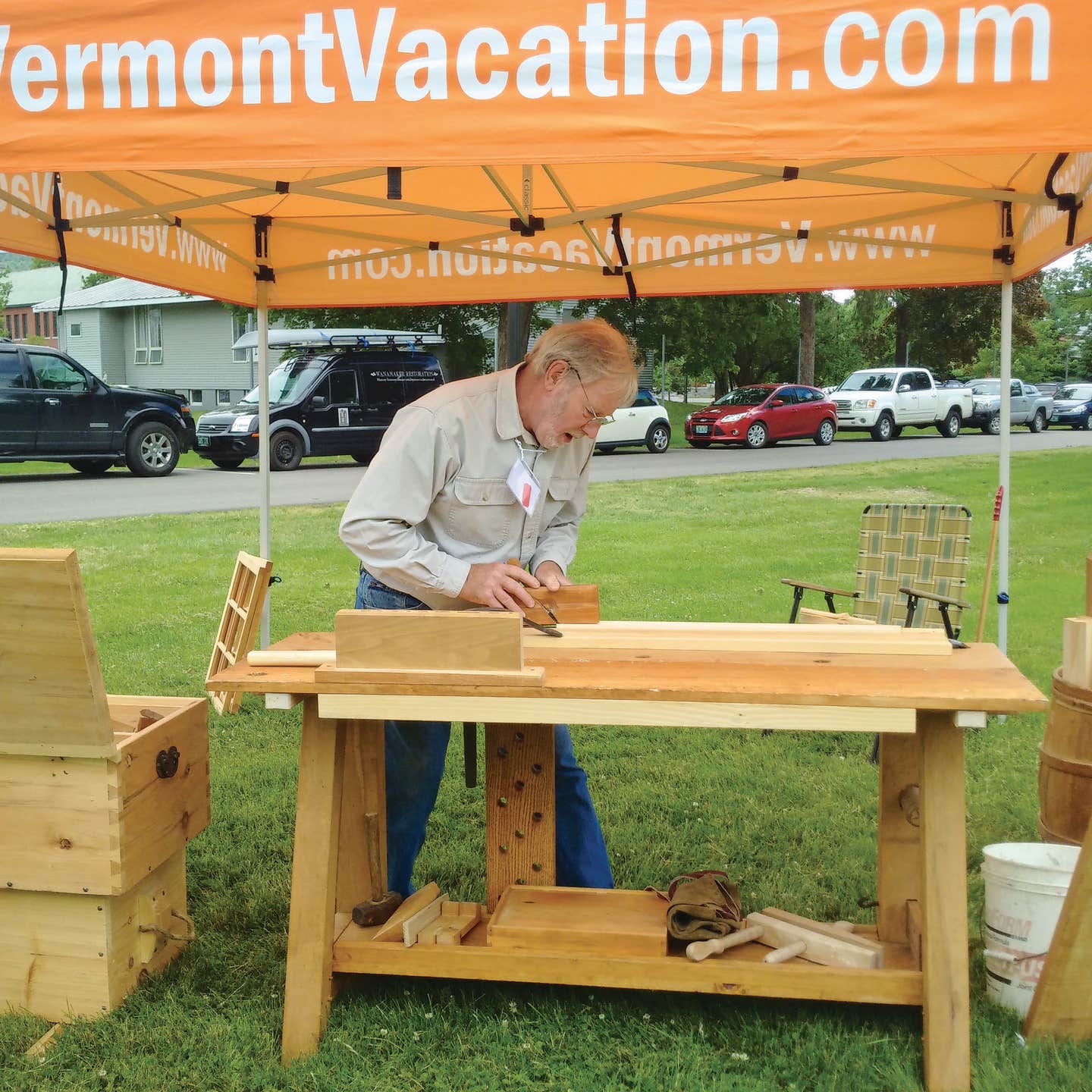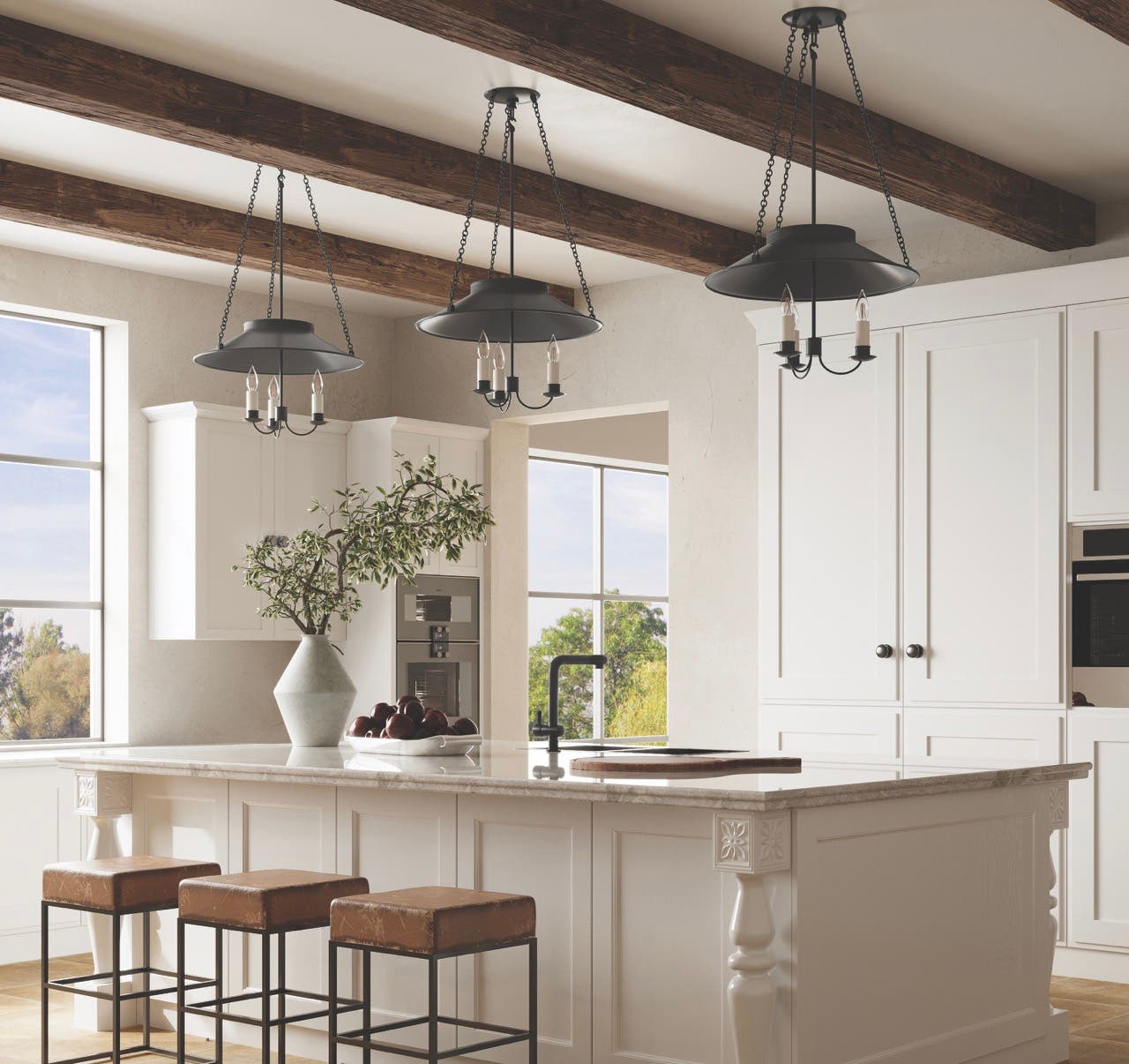
Product Reports
Life-Long Learning: Woodworking with Hand Tools
After studying hotel management in college and giving it a try professionally, Ted returned to Vermont having decided his chosen field was not for him. He went to work for a builder and found success in remodeling. It was a good career and it paid well, but it didn’t seem to capture his imagination. From time to time, his boss was asked to work on older buildings and Ted increasingly found himself assigned to these jobs because he had “the patience” to work on older buildings.
At first, his work focused on the ample mid-19th-century housing stock of Rutland, VT. He found beautiful woodwork and began to wonder how such fine workmanship was done before the advent of electricity. He began to frequent libraries and buy books about tools and historic buildings. The buildings, he learned, were crafted mostly on machines that were developed during the early years of the Industrial Revolution and powered by hand, water or steam.
His studies, done mostly in isolation, pushed him further back in time. Inspired by Eric Sloane’s books, he began to delve into the world of hand tools and he frequented antique shops and flea markets in search of planes and more tools.
When it came time to build a home for his family, he crafted more than 30 double-hung windows by hand and the next step in his career was launched. He acknowledges that he works in all aspects of construction to be successful at his trade. The jobs to fabricate work entirely by hand are few and far between, but he credits the research and opportunities to build by hand to cultivating an appreciation for hand-crafted woodwork that improves all his projects.
Appreciation of the conditions under which our forbears worked is another quality that has served Ted well. When asked just what it is about 18th and early 19th century sash—he is most interested in the period of 1750-1820—that inspired him most, he replied without hesitation that “windows are the most vulnerable element” in the building envelope, yet the windows performed admirably despite rapid cycles of heat, cooling, light, darkness, rain, snow and wind. We asked a lot of them. Walls are thicker and comprise a frame, sheathing, clapboards on the exterior and usually plaster and lath on the interior; there is more depth of material to thwart the elements. Windows of the 18th-19th century transitional period vary in thickness from 7/8-in. to at most 1¼-in. Each window has numerous joints depending on the numbers of panes in each sash. Double-hung windows are made up of two operable sashes. The panes or lights of glass are held by muntins—hand-crafted crosspieces exhibiting their profiles to the inhabitants of the interiors of the homes they illuminated. A small amount of wood and glass combine to offer protection and light.
When asked why many of them performed as well as they did, he credits the use of slow-growth hardwoods and northeastern white pine to their longevity, in addition to the craftsmen who fabricated the windows. Nevertheless, extant 18th-century sash has become harder and harder to find. Deterioration, rapid advances in glass technology of the 19th and early 20th century made larger panes of glass possible and humans gravitated toward the resulting increase in light afforded by the larger lights of glass.
When asked if he had a favorite window, Ted said, “any Palladian or Venetian window.” The combination of shape and molding profiles of these surviving windows inspire him with respect and appreciation for earlier craftspeople. Readers of Traditional Building are smiling and nodding their heads in agreement while reading this, no doubt.
He no longer studies this passion in isolation. Due to a rising interest in hand-craftsmanship that began in the last quarter of the 20th century, Ted has many like-minded souls to share his knowledge and skills with in public settings. He usually demonstrates at an annual event at Historic Deerfield in October.
He also became the director of a seasonally operated museum in South Hero, VT, that houses 3,000 tools, The Arnold Zlotoff Museum. It houses the collection of Arnold Zlotoff who taught industrial arts in the New York City public school system after a stint in the army in the 1940s. Zlotoff started collecting historic tools while in college and assembled a collection that his family now stewards and shares with the public.
The museum is housed in a restored 19th-century barn on the grounds of Apple Island Resort and admission is free. There is a video on the museum’s website that illustrates the way in which a joiner, a craftsman who works primarily on a bench, fabricates a traditional window sash. It shows Ted Ingraham at the bench at work.
Additional Resources
To learn more about Ted’s work, contact him at joyner@together.net. He is particularly keen to continue examining extant mid-18th century window sash. He is most interested in the earliest Georgian era double-hung windows that succeeded earlier casement windows from the First Period in American architectural history.
This article launches a new column that will appear in each issue of Traditional Building as well as online at www.traditionabuilding.com. Judy Hayward, executive director of Historic Windsor and its Preservation Education Institute (www.preservationworks.org) and education director for the Traditional Building Conference Series and Online Education Center (www.traditionalbuildingshow.com) will author the column. With 35 years of experience in historic preservation education, she will profile many of the people she has worked with and share the details of craft process and building materials that enrich the lives of those who live, work or steward historic and new traditionally-inspired buildings. Contact her at jhayward@aimmedia.com or peihwi@gmail.com.
Judy L. Hayward spends her days pursuing a passion for historic architecture and the ways in which it can be reused to sustain and grow healthy communities. She develops courses in partnership with builders, architects, traditional craftspeople and others to teach both historic preservation and traditional building skills. She has one foot in the nonprofit world as executive director of Historic Windsor and the Preservation Education Institute and the other foot in the world of media and information services as education director for the Traditional Building Conference Series and Online Education Program.








